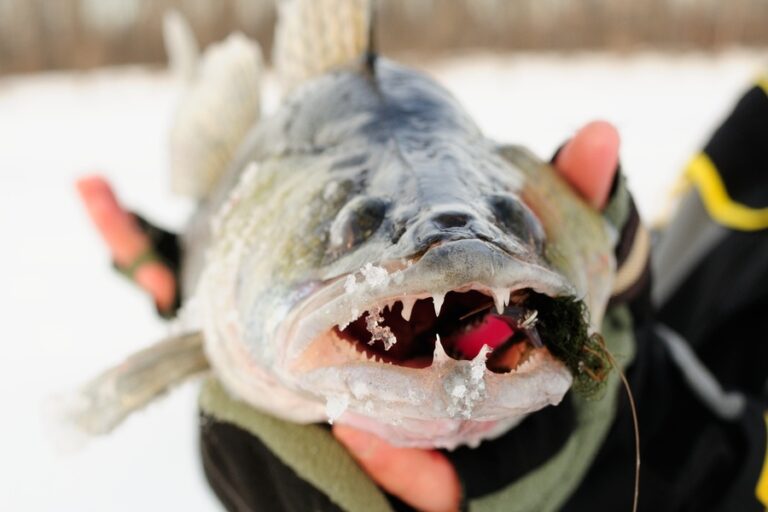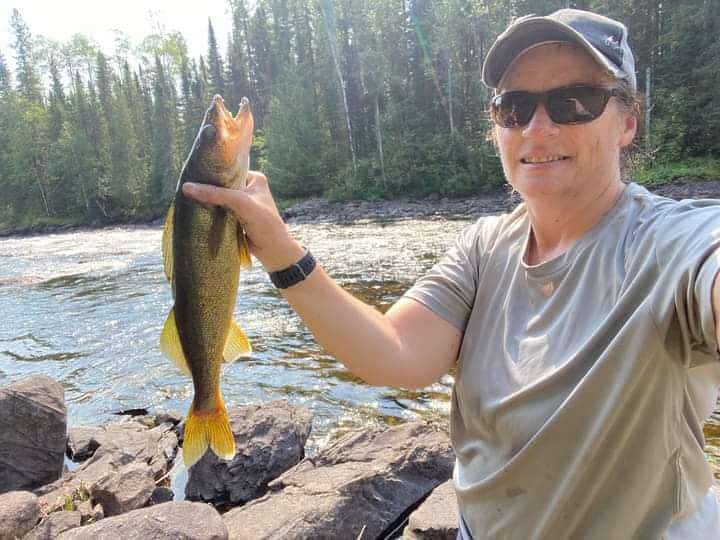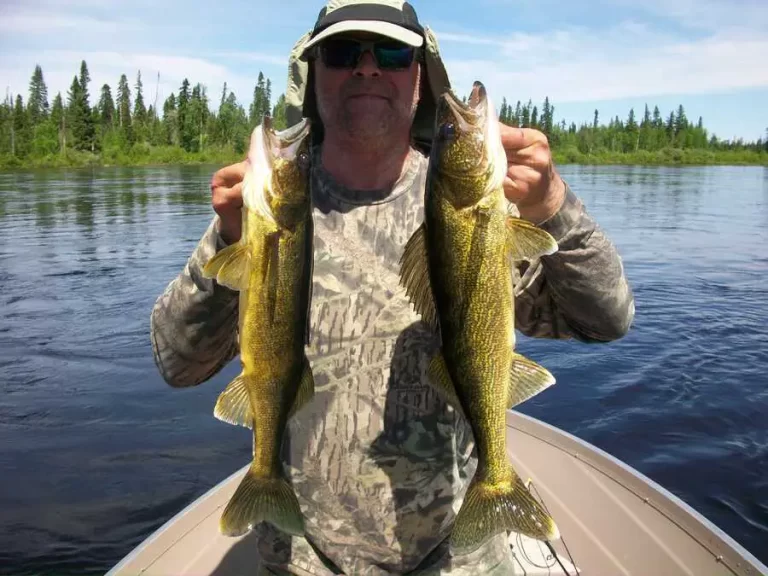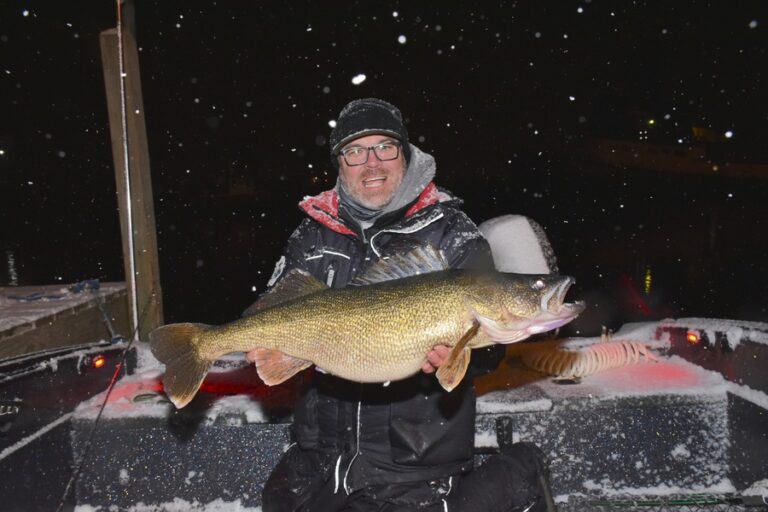Walleye Fishing in Rain (Before, During, & After) Full Guide
During rain, walleye move to shallower waters, especially near rocky or weedy areas. After the rain, they tend to settle in clearer waters, sticking to medium depths near riverbanks or lake drop-offs.
| Rain Condition | Walleye Fishing Quality | Explanation |
|---|---|---|
| Before Rain | Good | Walleye may increase their feeding activity before a storm due to changes in atmospheric pressure. However, this is not always a guarantee. |
| During Rain | Variable | The effectiveness of fishing during rain varies. Light rain can be good as it stirs up baitfish and provides cover. Heavy rain, however, can make fishing difficult due to decreased visibility and potentially hazardous conditions. |
| After Rain | Good to Fair | Post-rain conditions can be productive, especially if the rain has stirred up food sources. However, if the rain significantly alters water clarity or levels, it might temporarily disrupt normal walleye behavior and feeding patterns. |
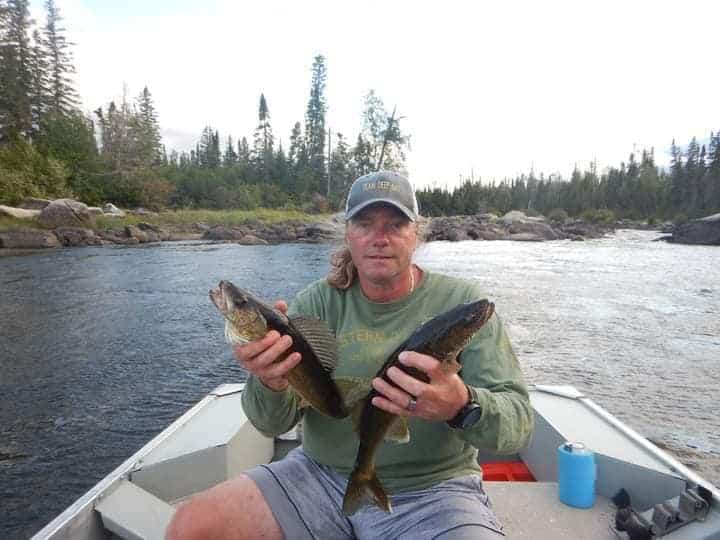
Table of Contents
Walleye Fishing in Rain: Locations
Before Rain
As a storm approaches, the air pressure drops. This often makes walleye more active.
- Spring: Walleye like to be near rocky areas and sandbars in rivers. They might be in water that’s 5-15 feet deep.
- Summer: Look for them near cooler, deeper waters, maybe 10-25 feet deep, especially if the day was warm.
- Fall: They hang out near drop-offs or where the river bottom changes, like mud to gravel. Depths of 5-20 feet are common.
- Winter: They’ll mostly be deep, around 15-30 feet. Search in calmer parts of the river, away from ice. Walleye prefer slower-moving waters, so look in eddies and seams where fast water meets slow water. Fishing can be great before rain.
During Rain
Rain can stir up the water, making smaller fish move, which can attract walleye.
- Spring: They might move to shallower waters, around 3-10 feet, looking for food.
- Summer: If it’s a warm rain, they’ll stay deeper, maybe 15-20 feet. Cool rain might bring them up shallower.
- Fall: They might go to medium depths, like 10-15 feet. Look near places where water moves over rocks or through weeds.
- Winter: They’ll likely stay in their deep spots, around 20-30 feet, especially if it’s cold rain or snow. Strong rain can make river currents faster. Walleye might move to calmer places like eddies to stay out of the fast water. Fishing during rain can be good, especially if it’s a light, warm rain.
After Rain
Once the rain stops, the water may be murky. This can make walleye feel safe to move to new spots.
- Spring: Check areas near the riverbanks, in about 4-12 feet of water.
- Summer: They’ll likely be in 10-20 feet of water, resting after the rain.
- Fall: Look in 5-15 feet of water, especially if leaves got washed into the river.
- Winter: They’ll be deep, maybe 20-30 feet. They won’t move much if it’s cold. As the river goes back to normal, walleye will go back to their favorite spots in seams and eddies. Fishing after rain can be the best time, especially if the water clears up quickly.
Seasonal Guide: Locating Rainy Day Walleye
Spring
Light spring rain can improve the bite as it stirs up the water and makes baitfish more active. Look for walleye in 5-20 feet of water near inlets and creek mouths of larger bodies of water. Fishing will be best before or during light rains.
Fish around rocky points and sandbars in rivers. It should be noted that heavy rains will swell rivers and lakes with muddy water. Walleye will seek out the clearest, slowest-moving water they can find. Often in river systems, they will be a few hundred meters up feeder creeks in water as shallow as 4 feet.
Summer
In summer, walleye will normally in deeper holes during the daytime seeking colder water. Typically walleye are docile during the daytime but rain can make walleye more active and feed more. Before and during solid rains, walleye will often push up into 10-20 feet of water with rocky outcrops and deep weed edges being great spots.
Reefs and drop-off ledges are great spots, too if you locate large schools of herring or shad nearby. The fishing will be best 3 hours before the rain until mid-storm. The fishing will slow down once the rain stops and finesse fishing becomes the only effective way after.
Fall
In the fall, walleye begin ramping up feeding behavior. Winter is fast approaching and they need to pack on weight before the cold sets in. Cooler rains will drive walleye to transitional zones like drop-offs and sandbars in rivers.
Look for river and lake walleye in 5-20 feet of water, mainly dependent on where the large schools of perch, alewives, and smelt are. Electronic sonar is a must-have to find these baitfish. Dropping barometric pressure before rain put walleye into hyperdrive.
Walleye will feed aggressively before rain until about halfway through the storm. Fish will be extremely tough after the rain, especially in rivers swollen with chocolate milk water. You will need to find walleye in the calmest, clearest water.
Winter
Ice fishing for walleye is huge, especially in the midwest and Canada. But winter walleye fishing is typically pretty slow. Walleye are typically staying down deep with their bellies often resting right on bottom.
Rain and rain/snow mix can impact water clarity and rise water temperatures to more comfortable levels. Walleye will push up to mid-range depths between 15-25 feet looking for hard structure like rock, ledges, drop-offs, and sunken timber.
Fishing will be best just before the precipitation. Some of my best walleye fishing has been before and during lazy snowfalls. Driving rain and snow will normally shut down the bite in winter.
For a complete breakdown of where to catch walleye, check out this guide. Click here to learn how to catch walleye on cloudy days and how to catch walleye on windy days.
Best Walleye Features for Storms
Deep Pools: Walleye will push into deep pools and holes in rivers before and throughout rain as these holes will often keep water clarity as surrounding faster water gets muddier. These will be great fishing spots before and during significant rain.
| Location Type | Description | Reason for Effectiveness |
|---|---|---|
| Near Submerged Logs | Areas where trees have fallen into the water. | Walleye often use these as hiding spots. |
| Deep Water Areas | Parts of the lake that are significantly deeper than the surrounding areas. | Walleye move to deeper waters in bad weather. |
| Inlets and Outlets | Where water enters or exits the lake, such as streams or small rivers. | These areas have higher oxygen levels and attract baitfish, which in turn attract walleye. |
| Rocky Bottoms | Areas of the lake with a rocky rather than muddy or sandy bottom. | Walleye prefer rocky areas as they hold more heat and attract baitfish. |
| Weed Lines | Edges where there is dense underwater vegetation. | Walleye use these areas for cover and to ambush prey. |
| Sheltered Bays | Areas that are less affected by wind and waves, often found in the lee of a landform or structure. | These areas are calmer, allowing walleye to feed without too much disturbance. |
Rocky Outcrops: These provide excellent current breaks and ambush sites. They will also break up muddying water providing pockets of clearer water for better underwater visibility. I love fishing these features in 10-15 feet of water in lakes and rivers before rain.
Eddies: Eddies are circular pockets of calm water immediately behind large current breaks like rocks. These pockets will hold a ton of walleye before, during, and after rainfall as the water will be a bit clearer and less exhaustive for walleye and baitfish to swim against. Look for eddies in 10-25 feet of water.
River Bends: River bends feature fast-moving water on the outer edge of the bend and the inside edge will have slower water. Walleye will settle in the clearer, slower water inside these bends. During and after rain, fish these bends looking for settled-down walleye.
Deep Weed Edges: Deep weed edges in water 8-15 feet can be awesome spots before rain. Look for cabbage, reeds, and lily pads where transitional water depths near shallower weedy areas.
These spots will hold a ton of food, including shiners, perch, and bluegill. Pre-rain feeding behavior will see walleye feeding aggressively here. Cast swimbaits like Keitechs, as well as jerkbaits and crankbaits.
Conclusion
Before rain, walleyes are active. In spring, they favor 5-15 feet depths near rocky riverbeds. Summer sees them in cooler 10-25 feet depths. In fall, they’re drawn to 5-20 feet drop-offs. By winter, they mostly settle around 15-30 feet.
During rain, their depth varies with water temperature. Spring may push them to shallower 3-10 feet waters. Warm summer rain keeps them at 15-20 feet, but cooler rain brings them up. Fall positions them around 10-15 feet near obstacles, while winter keeps them deep, especially during cold rains.
After rain, clarity dictates their location. Springtime finds them near 4-12 feet riverbanks. Summer locates them at 10-20 feet, and fall at 5-15 feet. In winter, they prefer the deeper waters, sticking to around 20-30 feet.


